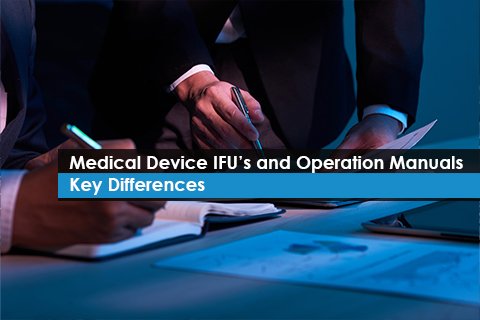Design of logical Instructions for Use (IFU) and Operation Manual of medical devices requires an efficient, structured, and organized approach. It is critical for ensuring a medical device user’s safety and comprehension, as IFU and manuals are used to inform the end-user how to use the device. Modern medicine is extremely techy, and the quality of IFU, as well as operation manuals, are expected to be high as it may impact human well-being and lives.
Designing effective IFU and operation manuals begin with the completion of a task of requirement analysis and the integration of the steps outlined by risk management. Risk management procedures and human factors evaluations provide the framework for identifying and mitigating use errors stemming from poor IFU design. The integration of risk management and usability is key. A detailed, content-filled IFU with no organizational structure is just as ineffective as a structured IFU that lacks quality content.
Not all instructions are developed with the same level of care and attention to detail. Sometimes IFUs fall short because creators err on the side of simplicity versus clarity. Sometimes it is because there is a heavy emphasis on the content of the IFU, but almost no thought has been placed on the organization of the IFU. To assist with user comprehension, it is important to remain consistent and mindful of how information is being presented and look at your IFU from many angles.
So, what is the essential differentiator between an IFU and an Operation Manual? There is considerable overlap among the two, and to some extent, they can be interchangeable. They can be coupled together or with other terms, as an instruction manual or a user guide. Manual refers specifically to a reference document that provides detailed information about the operation and maintenance of a product. Manufacturers often provide an official manual for a product to aid its owners or users – cars, for example, usually come with an owner's manual or machinery with an operator's manual. It may be a detailed reference, but it can also indicate a very simple overview or instructions for a small subset of features. Since "manual" has connotations of dense, boring text, some manufacturers or technical writers prefer the label "guide" for what would traditionally be called a "manual".
Instructions are the most generic term and may be synonymous with directions – step-by-step guidance on how to perform a specific task or function. A manual or guide will include many sets of instructions. Used alone, however, "instructions" can refer to the simplest explanatory text – push cap and twist to open.
The operation manual is the most official and comprehensive reference to the operation and maintenance of a product or device. Manuals may also provide conceptual information, such as design theory. Manuals are comprehensive enough to include information that would otherwise be found in separate guides or instructions, such as usage scenarios, diagnostic procedures, installation instructions, etc.
Simply put, IFU is a procedure (presumably tested procedures) used for accomplishing specific tasks. The instructions can be contained in a manual or guide or standalone documents. Summarizing it, operation manuals focus on how to operate a medical device, while IFU focuses on instructions for performing tasks on a medical device.
Freyr offers comprehensive technical writing solutions with tailor-made packages for products or projects and, most importantly, provides end-to-end solutions with Med-tech Regulatory services. Contact Freyr now. Stay informed. Stay compliant.





